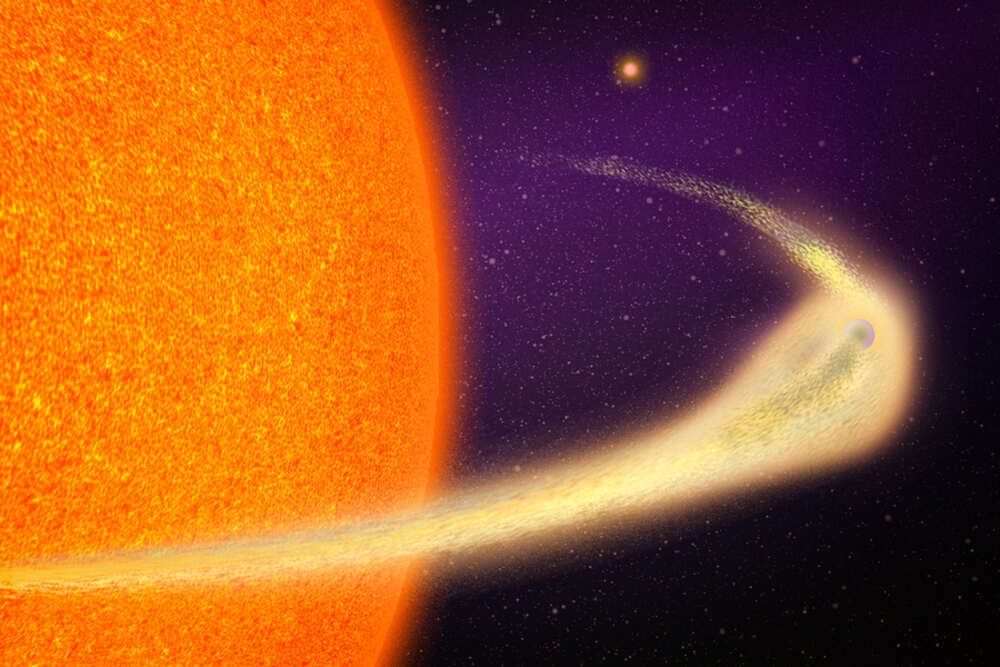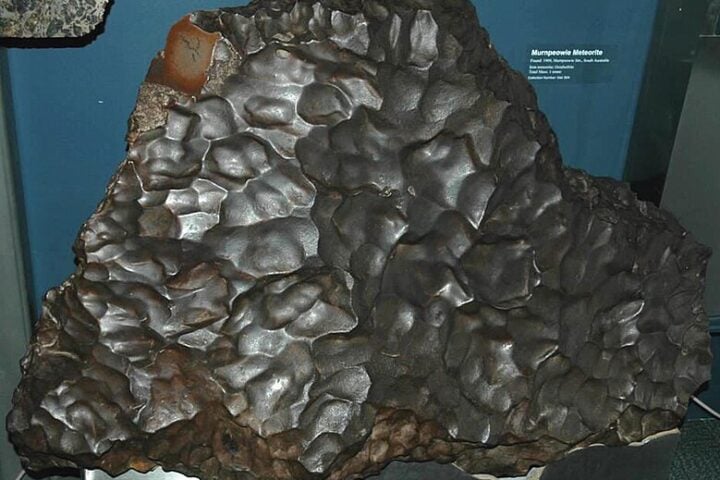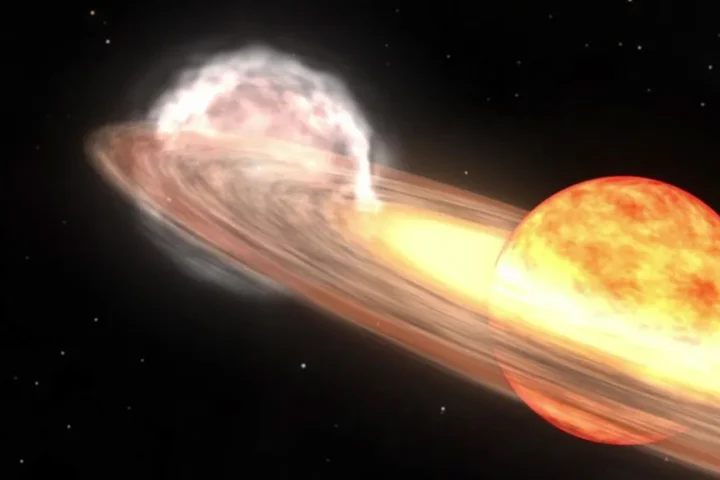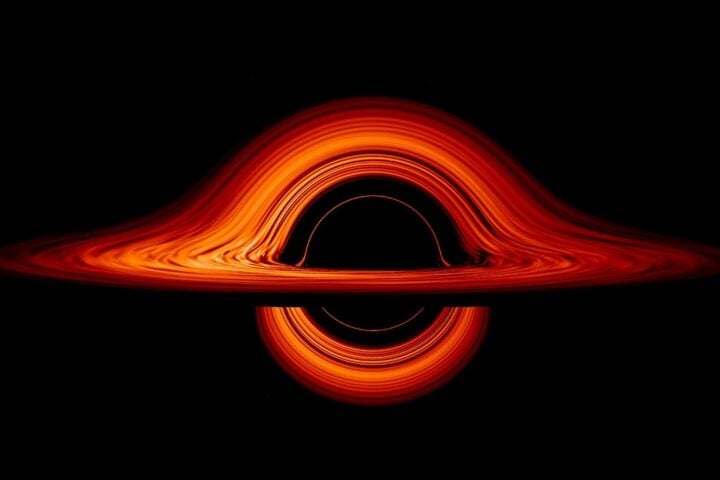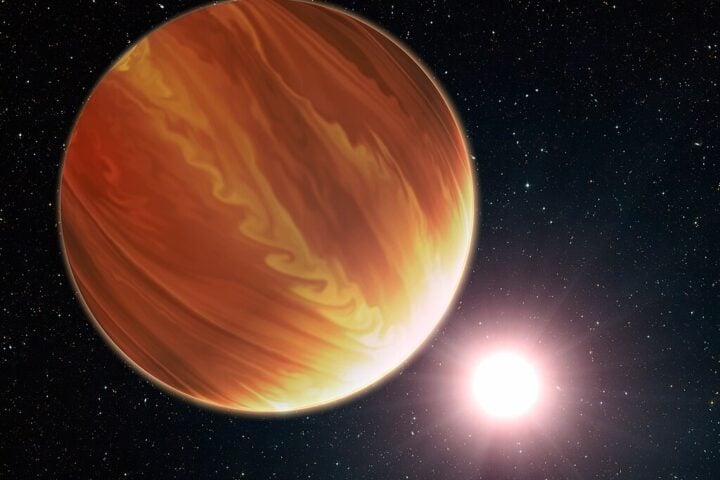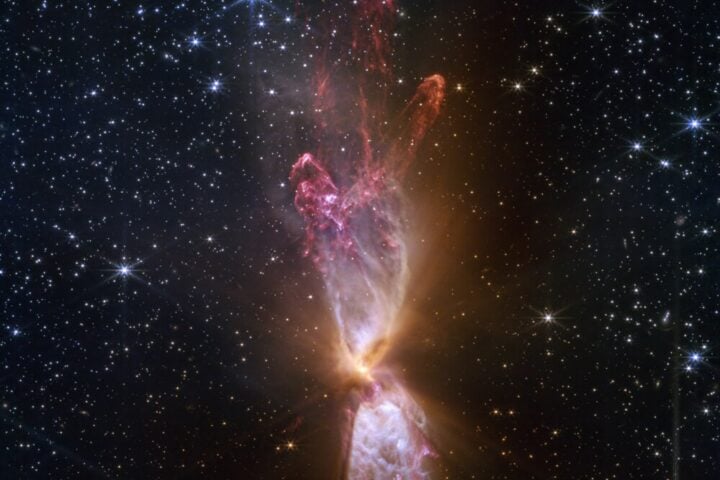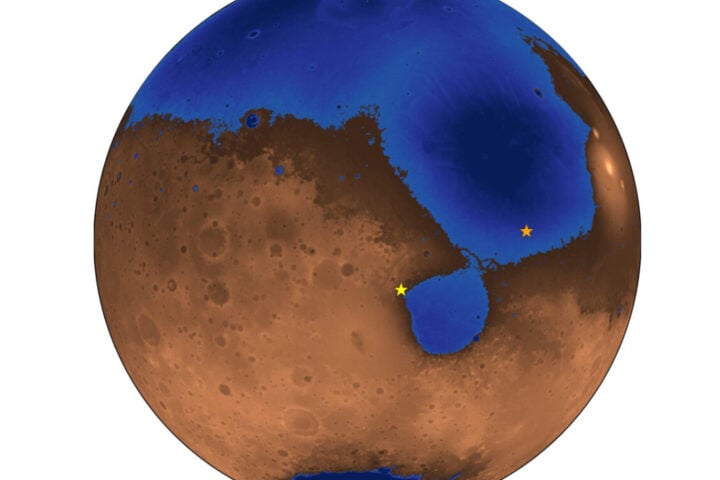MIT astronomers have discovered a planet that is rapidly disintegrating. Located 140 light-years from Earth in the constellation Pegasus, the planet known as BD+05 4868 Ab is rapidly coming apart as it orbits extremely close to its host star.
“We got lucky with catching it exactly when it’s really going away,” says Avi Shporer from MIT’s TESS Science Office. “It’s like on its last breath.”
This Mercury-sized world circles its star at a blistering pace, completing an orbit every 30.5 hours—about 20 times closer to its star than Mercury is to our Sun. At this proximity, the planet endures temperatures of approximately 1,600 degrees Celsius (3,000 degrees Fahrenheit), hot enough to melt and boil off its rocky surface.
The extreme heat is causing the planet to shed an amount of material equivalent to one Mount Everest each time it orbits its star. As this material streams away from the dying world, it forms a colossal comet-like tail stretching 9 million kilometers—roughly half the planet’s entire orbital path.
Scientists predict the planet will completely disappear within 1 to 2 million years, an incredibly short timeframe in astronomical terms.
A Chance Discovery
The planet wasn’t discovered through conventional planet-hunting methods. The astronomers spotted its unusual signature while analyzing data from NASA’s Transiting Exoplanet Survey Satellite (TESS).
Marc Hon, a postdoc at MIT’s Kavli Institute for Astrophysics and Space Research, explained that they weren’t looking for this kind of planet. He mentioned that while doing typical planet vetting, he happened to spot a signal that appeared very unusual.
Similar Posts:
Typical planet signals show a brief, consistent dip in a star’s brightness as the planet passes in front. But BD+05 4868 Ab produced a peculiar pattern—the brightness took much longer to return to normal, and the depth of the dip changed with each orbit.
This unusual signal indicated something was trailing behind the planet, blocking additional starlight. The varying depth suggested the trailing structure wasn’t consistent in size or shape.
Hon noted that the shape of the transit is typical of a comet with a long tail. He explained that it’s unlikely this tail contains volatile gases and ice as expected from a real comet, as these wouldn’t survive long at such close proximity to the host star. Instead, he pointed out that mineral grains evaporated from the planetary surface can linger long enough to create such a distinctive tail.
A Runaway Destruction Process
The planet’s small size—with a mass between our Moon and Mercury—plays a crucial role in its rapid destruction. Its weak gravity can’t hold onto its surface materials against the star’s intense radiation.
Shporer explained that this is a very tiny object with very weak gravity, so it easily loses a lot of mass, which then further weakens its gravity, causing it to lose even more mass. He described it as a runaway process that’s only getting worse for the planet.
This self-reinforcing cycle explains why the planet is disintegrating so quickly and will continue to do so at an accelerating pace.
A Rare Astronomical Find
BD+05 4868 Ab is only the fourth disintegrating planet ever discovered beyond our solar system, with the previous three found over a decade ago using NASA’s Kepler Space Telescope. What makes this planet special is that it has the longest tail and deepest transit signals of any known disintegrating world.
Hon explained that this implies its evaporation is the most catastrophic, and it will disappear much faster than the other planets.
The Next Step: Analyzing a Planet’s Interior
The discovery offers astronomers an unprecedented opportunity to study the inside of a rocky planet—something typically impossible to do directly.
Hon and graduate student Nicholas Tusay from Penn State University will lead observations of BD+05 4868 Ab using NASA’s James Webb Space Telescope (JWST). The powerful telescope will analyze which colors of infrared light the dust tail absorbs, revealing the mineral composition of the evaporated planetary material.
“This will be a unique opportunity to directly measure the interior composition of a rocky planet, which may tell us a lot about the diversity and potential habitability of terrestrial planets outside our solar system,” says Hon.
The MIT team is now actively searching for other disintegrating worlds in TESS data, although these objects present unique challenges for detection.

Shporer noted that these are weird objects, and the shape of the signal changes over time, making them difficult to find. He added that it’s something they’re actively working on.
The discovery provides a rare glimpse into the violent end of a planetary life cycle and offers valuable insights into the fundamental building blocks of rocky worlds—information that could help scientists better understand the formation and potential habitability of planets throughout our galaxy.
